miRNA-142-3p aggravates hydrogen peroxide-induced human umbilical vein endothelial cell premature senescence by targeting SIRT1
- PMID: 38663003
- PMCID: PMC11096645
- DOI: 10.1042/BSR20231511
miRNA-142-3p aggravates hydrogen peroxide-induced human umbilical vein endothelial cell premature senescence by targeting SIRT1
Abstract
Vascular endothelial cell premature senescence plays an important part in stroke. Many microRNAs (miRNAs) are known to be involved in the pathological process of vascular endothelial cell premature senescence. The present study aimed to investigate the mechanism of hydrogen peroxide (H2O2)-induced premature senescence in human umbilical vein endothelial cells (HUVECs) and effect of miR-142-3p on hydrogen peroxide (H2O2)-induced premature senescence. HUVECs were exposed to H2O2 to establish a model premature senescence in endothelial cells. CCK-8 assay was performed to detect cell viability. Senescence-associated β-galactosidase staining assay and senescence-related proteins p16 and p21 were used to detect changes in the degree of cell senescence. RT-qPCR and Western blot were conducted to measure mRNA and protein levels, respectively. The scratch wound-healing assay, transwell assay, and EdU assay were performed to evaluate the ability of migration and proliferation, respectively. miRNA-142-3p and silencing information regulator 2 related enzyme 1 (SIRT1) binding was verified using Targetscan software and a dual-luciferase assay. We found that miRNA-142-3p is abnormally up-regulated in HUVECs treated with H2O2. Functionally, miRNA-142-3p inhibition may mitigate the degree of HUVEC senescence and improve HUVEC migration and proliferation. Mechanistically, SIRT1 was validated to be targeted by miRNA-142-3p in HUVECs. Moreover, SIRT1 inhibition reversed the effects of miRNA-142-3p inhibition on senescent HUVECs exposed to H2O2. To our knowledge, this is the first study to show that miRNA-142-3p ameliorates H2O2-induced HUVECs premature senescence by targeting SIRT1 and may shed light on the role of the miR-142-3p/SIRT1 axis in stroke treatment.
Keywords: Senescence; endothelial cells; miRNA-142-3p; oxidative stress; sirtuins; stroke.
© 2024 The Author(s).
Conflict of interest statement
The authors declare that there are no competing interests associated with the manuscript.
Figures

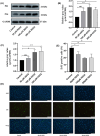

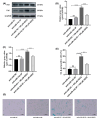
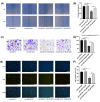

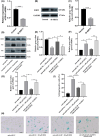
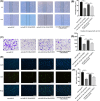
Similar articles
-
Tetrahydroxy stilbene glycoside attenuates endothelial cell premature senescence induced by H2O2 through the microRNA-34a/SIRT1 pathway.Sci Rep. 2022 Feb 1;12(1):1708. doi: 10.1038/s41598-022-05804-9. Sci Rep. 2022. PMID: 35105933 Free PMC article.
-
[Tanshinone IIA attenuates hydrogen peroxide-induced senescence of human umbilical vein endothelial cells through activating SIRT1/eNOS pathway].Xi Bao Yu Fen Zi Mian Yi Xue Za Zhi. 2019 Sep;35(9):806-811. Xi Bao Yu Fen Zi Mian Yi Xue Za Zhi. 2019. PMID: 31750822 Chinese.
-
Curcumin Attenuates Hydrogen Peroxide-Induced Premature Senescence via the Activation of SIRT1 in Human Umbilical Vein Endothelial Cells.Biol Pharm Bull. 2015;38(8):1134-41. doi: 10.1248/bpb.b15-00012. Biol Pharm Bull. 2015. PMID: 26235577
-
[Effect of microRNA-34a/SIRT1/p53 signal pathway on notoginsenoside R₁ delaying vascular endothelial cell senescence].Zhongguo Zhong Yao Za Zhi. 2018 Feb;43(3):577-584. doi: 10.19540/j.cnki.cjcmm.20180110.001. Zhongguo Zhong Yao Za Zhi. 2018. PMID: 29600625 Chinese.
-
MiR-217 promotes endothelial cell senescence through the SIRT1/p53 signaling pathway.J Mol Histol. 2021 Apr;52(2):257-267. doi: 10.1007/s10735-020-09945-x. Epub 2021 Jan 3. J Mol Histol. 2021. PMID: 33392891
Cited by
-
The Dark Side of Vascular Aging: Noncoding Ribonucleic Acids in Heart Failure with Preserved Ejection Fraction.Cells. 2025 Aug 16;14(16):1269. doi: 10.3390/cells14161269. Cells. 2025. PMID: 40862748 Free PMC article. Review.
-
GDF-15 Alleviates Hypoxia-Reoxygenation-Induced Damage to Human Placental Vascular Endothelial Cells by Regulating SIRT1.Cureus. 2024 Aug 3;16(8):e66073. doi: 10.7759/cureus.66073. eCollection 2024 Aug. Cureus. 2024. PMID: 39224743 Free PMC article.
References
Publication types
MeSH terms
Substances
Grants and funding
LinkOut - more resources
Full Text Sources

